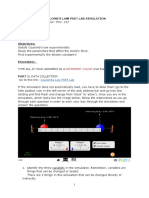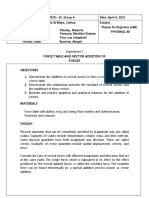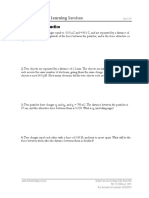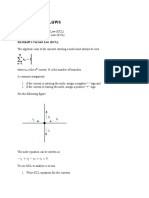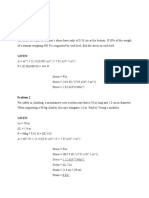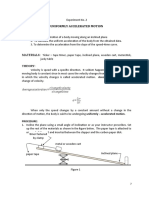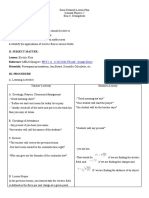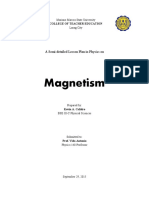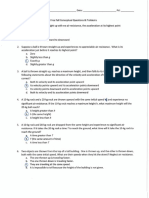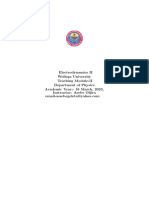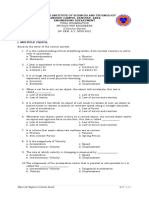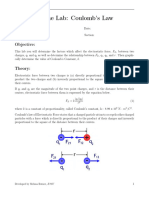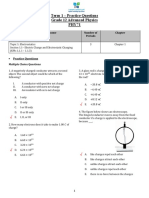0% found this document useful (1 vote)
4K views9 pagesCoulombs Law Online Lab
1) This lab experiment aims to determine the factors that affect electrostatic force between two charges and establish the relationship as described by Coulomb's Law.
2) Data was collected on the electrostatic force between two charges for different combinations of charge magnitudes and separation distances.
3) Graphing the data showed that electrostatic force is inversely proportional to the square of the distance between the charges, supporting Coulomb's Law.
4) The slope of the graph yielded a measured value for Coulomb's constant k that was within 1% of the accepted value, validating the experimental results.
Uploaded by
Jennie KimCopyright
© © All Rights Reserved
We take content rights seriously. If you suspect this is your content, claim it here.
Available Formats
Download as PDF, TXT or read online on Scribd
0% found this document useful (1 vote)
4K views9 pagesCoulombs Law Online Lab
1) This lab experiment aims to determine the factors that affect electrostatic force between two charges and establish the relationship as described by Coulomb's Law.
2) Data was collected on the electrostatic force between two charges for different combinations of charge magnitudes and separation distances.
3) Graphing the data showed that electrostatic force is inversely proportional to the square of the distance between the charges, supporting Coulomb's Law.
4) The slope of the graph yielded a measured value for Coulomb's constant k that was within 1% of the accepted value, validating the experimental results.
Uploaded by
Jennie KimCopyright
© © All Rights Reserved
We take content rights seriously. If you suspect this is your content, claim it here.
Available Formats
Download as PDF, TXT or read online on Scribd
/ 9


